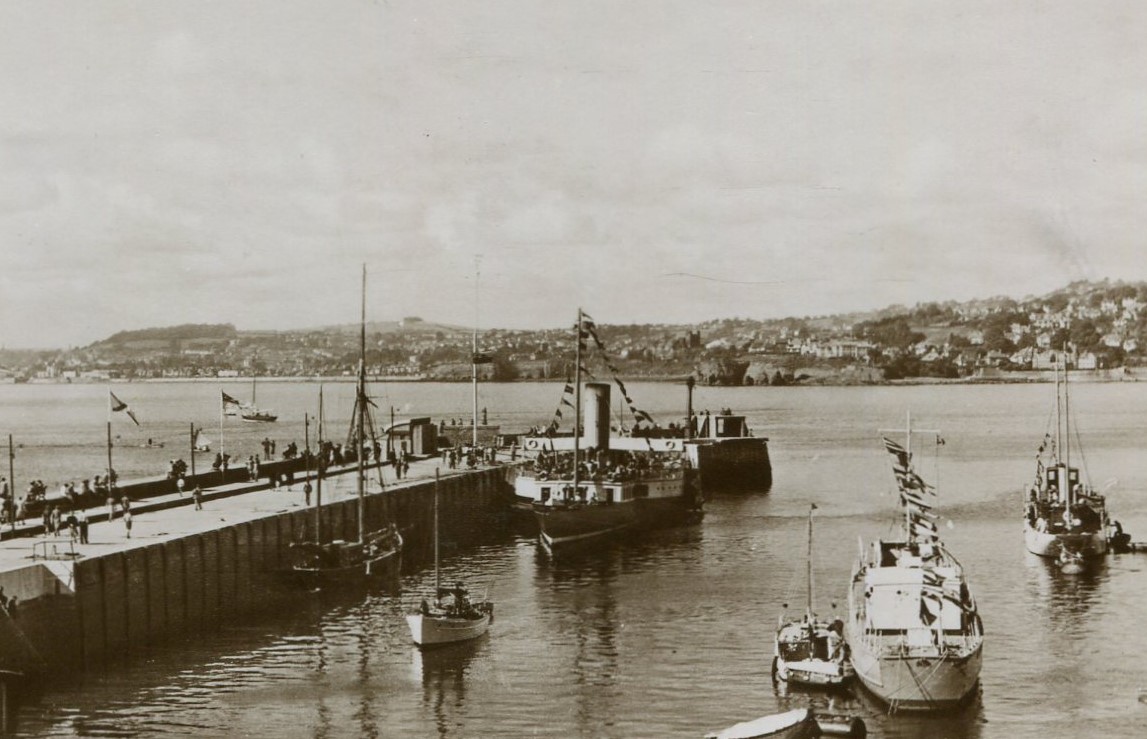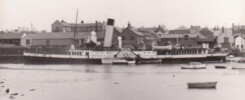
On Monday 6th September 1937 Essex Queen (ex Walton Belle) was scheduled to leave Great Yarmouth at 9.40am for Gorleston (9.55am) and Lowestoft (10.45am) bound for Clacton where she was due to arrive at 2.50pm. Departure was scheduled for 3.50pm to retrace her route back to Yarmouth where was due to arrive at 8.30pm.
At Clacton there was a connection to Queen of Southend (ex Yarmouth Belle) which was rostered to have arrived there at 1.15pm having come up from Chatham (9.15am) via Southend (11am). She was due away at 4.15pm for Southend (6.15pm) and Chatham (8pm). So you could have made a single trip all the way from Great Yarmouth to Kent or vice versa.

Essex Queen started out in 1897 as Walton Belle and Queen of Southend in 1896 as Yarmouth Belle as part of the expanding fleet of Belle paddle steamers ordered to provide better access to, and therefore help to develop, the resorts along the Essex, Suffolk and Norfolk coasts and thereby linking London with Great Yarmouth by sea with calls at piers along the way.
Walton Belle was bought by the New Medway Steam Packet Company in 1926. They renamed her Essex Queen and used her for excursions from Ramsgate and Margate to Southend, Clacton and Felixstowe as well as trips from the Medway to Southend and London. Having been converted to burn oil as early as 1931, she was based at Great Yarmouth for 1937 for the service shown in the leaflet above.

She was one of the great paddle steamer survivors even finding a new, albeit short lived, career trying to run excursions from Torquay for a couple of seasons just after the War under the name Pride of Devon. She was scrapped in 1951 at Southampton.

Yarmouth Belle was built for the service linking London and Great Yarmouth. She was sold in 1925 to the East Anglia Steamship Company which continued to operate the same routes until the end of the 1928 season when they went bust. Yarmouth Belle then passed to the New Medway Steam Packet Company who renamed her Queen of Southend and converted her to burn oil in 1931. Their principal, Capt Shippick, was ever a moderniser with an eye to increasing profits by enhancing passenger comfort.
All the Belle fleet had been built with open foredecks at main deck level but before the 1936 season Queen of Southend had her promenade deck extended to the bow with the sides plated up as shown in the picture above. The New Medway Steam packet Company used her on a variety of their routes including from Strood to London and for 1937 she was rostered for the run up to Clacton from the Medway and Southend meeting up with her old running mate Essex Queen at Clacton as shown in the leaflet above.
The following year, in 1938, she had her name changed once again this time to Thames Queen and was put on dock cruises from London. For 1939, her last year in passenger service, she was back running from the Medway to Southend, Herne Bay, Margate and Ramsgate. After war service she was broken up at Blyth in 1947.
One issue which plagued the Thames paddle steamers over the years was the necessity for sailing in sometimes what was, and still is, very shallow water to get to where they were going. For example in the approaches to Clacton Pier and over the Cant off the Kentish coast there was, and still is, barely more than 2m at chart datum. Given that all these steamers drew about 2m there were therefore times around the low water, and particularly around the low water springs, when, in these areas and others, they had little water under their keels.
Indeed so notorious was it that mariners sometimes wryly called the Cant “the Overland Passage”. This lack of water under their keels meant that the paddle wheels churned up material from the bottom and although the Thames is famed for its mud in many places there was, and still is, a good deal of sand mixed in with it. Sand is very abrasive. Sand and bearings do not mix so the feathering mechanisms of the Thames paddle steamers’ paddle wheels were ever subject to more than normal wear and tear than that enjoyed by paddle steamers elsewhere.
Kingswear Castle returned to service in 2023 after the first part of a major rebuild which is designed to set her up for the next 25 years running on the River Dart. The Paddle Steamer Kingswear Castle Trust is now fund raising for the second phase of the rebuild. You can read more about the rebuilds and how you can help if you can here.
John Megoran
This article was first published on 6th September 2020.


